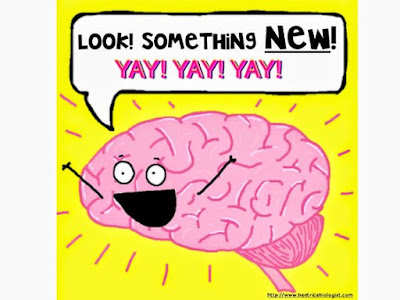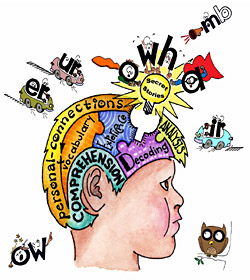Using Music to Cement “Sound-to-Symbol” Connections in the Brain
If you use the Secrets in your daily reading and writing (phonics) instruction, you may have wondered why the Secret Stories® musical brain teaser “songs” sound so differently from other educational songs sung in early grade classrooms? Like everything else that is Secret Stories®, it’s about getting the maximum “brain-BANG” for the instructional buck!
As teachers, we’ve all seen how easily and effortlessly students can sing through skills when they’re set in a song. Like, for example, the old “ABC Song,” assuming that you don’t mind the inclusion of that imaginary letter, “elemeno!” Kids sing daily songs as if on “autopilot,” which they are. The words literally roll off their tongue, and with no thinking required!
And this is good, right?
Not necessarily, as it depends what the skill is and how kids are going to need to use it.
Familiar and repetitive songs are perfect for fast mastery of “set” skills that are finite and sequential—in other words, skills that need only to be parroted back, “as is,” like the days of the week, months of the year, names of the planets, fifty nifty states, etc… Such skills are easily acquired through song and stored in learners’ muscle memory, which works much like a ‘read-only’ disc. This means that while the information is easily regurgitated, it cannot be altered or manipulated….which is fine for naming the days of the week, but not so helpful for manipulating letter sounds and phonics patterns to read and spell.
The “Unfamiliar and Unexpected” are the Brain’s BEST Friends!
Following is an excerpt from an article written by Belle Beth Cooper on Novelty and the Brain.
Why Getting New Things Makes Us Feel So Good: Novelty and the Brain
We all like novelty! In fact, our brains are made to be attracted to novelty. And it turns out that it could actually improve our memory and learning capacity!

It’s actually hardwired into my brain—and yours—to appreciate and seek out novelty. Anything that’s new, different or unusual… we can even be drawn to novelty without being conscious of it. Of course, this makes a lot of sense—we wouldn’t get much done if ordinary things captivated us constantly!
Here is a graph that shows activity in your brain on this:
According to a study conducted by Dr. Emrah Duzel from University College in London:
Subjects performed best when new information (i.e. constantly changing musical manipulations) was combined with familiar information (i.e. letters/sounds) during learning. After a 20 minute delay, subjects’ memory for slightly familiar information (i.e. letters/sounds) was boosted by 19 per cent if it had been mixed with something new during learning sessions.
This research suggests that we use the brain’s increased plasticity wisely by setting aside time to learn right after novel stimuli, as learners’ brains are more open to making new connections during and right after this time. So why not take advantage!
Dr Düzel pointed out additional benefits that could come from his research:
“We hope that these findings will have an impact on those with poor memory. Current practice aims to improve memory through repeatedly exposing a person to information. This study shows that it’s more effective if you mix something new with the old. You actually learn better, even though your brain is also tied up with new information.
It means that you can significantly improve knowledge retention and make new ideas and concepts (like letter sounds and phonics skills) stick by introducing novelty into the learning process. And doing this is easier than you think!
Above is just one example of MANY research studies showing the significant impact that novelty has on the brain, and for purposes of teaching and learning, novelty can take many forms! Incorporating novel experiences into daily learning doesn’t mean having to continually add on new skills and information to what you’re already teaching!
A Novel Approach to Decoding and Encoding with Musical Practice and Play
And it’s not just the musical brain teaser exercises in the Secret Stories® that make use of this “novelty-effect,” but the Secrets, themselves! Transforming phonics skills kids have to learn into secrets they want to know makes them important to kids—marking them for memory and prioritized learning in the brain (Mary Helen Immordino-Yang, 2018). This is especially true when framing them as “Grown-up Reading and Writing Secrets” that kids must be “big enough” to hear!

Click Here for the Digital Version of the Secret Stories® Beethoven Blends on Teachers Pay Teachers
The “Letter Runs” – Forward, Backward, Long & Short!
This song is almost never sung the same way twice, as you can do it backward AND forward, and even sing it to different tunes— from the Star-Spangled Banner to Happy Birthday—all while continually switching the vowel sounds back and forth, from long to short! (So many ways, so little time! ;-)
(Note: You can’t see from the way that the teacher is facing in the video, but she is pointing to each letter as it’s sung, so as to ensure that kids always “SEE what SING and SING what they SEE!” This is key to forging the the letter-sound connections in the brain. However, when doing the rapid-paced Letter Runs forward and backward, it’s much easier when using a vertical alphabet. (The one pictured beneath the video is included is included in the Better Alphabet Anchor Pack, shown further down below.)

Vertical Alphabet (in the Better Alphabet™ Anchor Pack below)

Click Here for the “Video-Version” of the Better Alphabet® Song

Click Here for the Better Alphabet™ Classroom Anchors

Click Here to Download the FREE “Appetizer-Pack” of Secret Stories® Phonics Posters

















